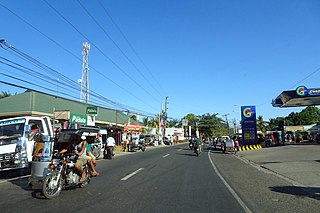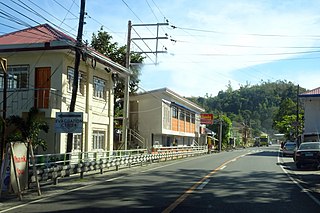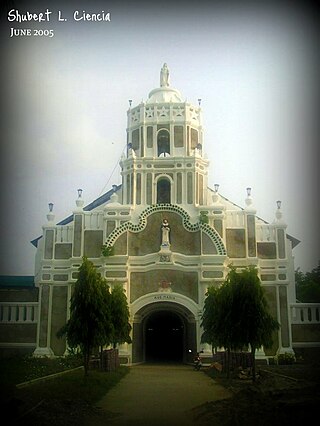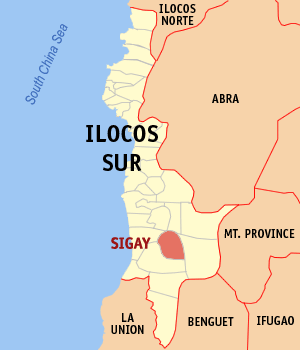
Ilocos Sur, officially the Province of Ilocos Sur, is a province in the Philippines located in the Ilocos Region in Luzon. Located on the mouth of the Mestizo River is the capital of Vigan. Ilocos Sur is bordered by Ilocos Norte and Abra to the north, Mountain Province to the east, La Union and Benguet to the south and the South China Sea to the west.

Vigan, officially the City of Vigan, is a 4th class component city and capital of the province of Ilocos Sur, Philippines. According to the 2020 census, it has a population of 53,935 people.

Narvacan, officially the Municipality of Narvacan, is a 2nd class municipality in the province of Ilocos Sur, Philippines. According to the 2020 census, it has a population of 46,234 people.

Bantay, officially the Municipality of Bantay, is a 3rd class municipality in the province of Ilocos Sur, Philippines. According to the 2020 census, it has a population of 37,118 people. It is situated just north-east of Vigan, the provincial capital.

Caoayan, officially the Municipality of Caoayan, is a 4th class municipality in the province of Ilocos Sur, Philippines. According to the 2020 census, it has a population of 19,574 people.

Cervantes, officially the Municipality of Cervantes, is a 4th class municipality in the province of Ilocos Sur, Philippines. According to the 2020 census, it has a population of 19,449 people.

Salcedo, officially the Municipality of Salcedo, is a 4th class municipality in the province of Ilocos Sur, Philippines. According to the 2020 census, it has a population of 11,110 people.

San Esteban, officially the Municipality of San Esteban, is a 5th class municipality in the province of Ilocos Sur, Philippines. According to the 2020 census, it has a population of 8,381 people.

San Ildefonso, officially the Municipality of San Ildefonso, is a 5th class municipality in the province of Ilocos Sur, Philippines. According to the 2020 census, it has a population of 8,190 people.

San Juan, officially the Municipality of San Juan, formerly called as Lapog, is a 3rd class municipality in the province of Ilocos Sur, Philippines. According to the 2020 census, it has a population of 26,674 people.

San Vicente, officially the Municipality of San Vicente, is a 5th class municipality in the province of Ilocos Sur, Philippines. According to the 2020 census, it has a population of 13,118 people.

Santa, officially the Municipality of Santa, is a 4th class municipality in the province of Ilocos Sur, Philippines. According to the 2020 census, it has a population of 14,992 people.

Santa Cruz (, officially the Municipality of Santa Cruz, is a 1st class municipality in the province of Ilocos Sur, Philippines. According to the 2020 census, it has a population of 41,366 people.

Santa Lucia, officially the Municipality of Santa Lucia, is a 3rd class municipality in the province of Ilocos Sur, Philippines. According to the 2020 census, it has a population of 25,966 people.

Santa Maria, officially the Municipality of Santa Maria, is a 3rd class municipality in the province of Ilocos Sur, Philippines. According to the 2020 census, it has a population of 30,006 people.

Santo Domingo, officially the Municipality of Santo Domingo, is a 3rd class municipality in the province of Ilocos Sur, Philippines. According to the 2020 census, it has a population of 29,041 people.

Sigay, officially the Municipality of Sigay, is a 5th class municipality in the province of Ilocos Sur, Philippines. According to the 2020 census, it has a population of 2,552 people.

Luna, officially the Municipality of Luna, is a 3rd class municipality in the province of La Union, Philippines. According to the 2020 census, it has a population of 37,318 people.

Santa Barbara, officially the Municipality of Santa Barbara, is a 1st class municipality in the province of Pangasinan, Philippines. According to the 2020 census, it has a population of 92,187 people.

Umingan, officially the Municipality of Umingan, is a 1st class municipality in the province of Pangasinan, Philippines. According to the 2020 census, it has a population of 77,074 people.


























